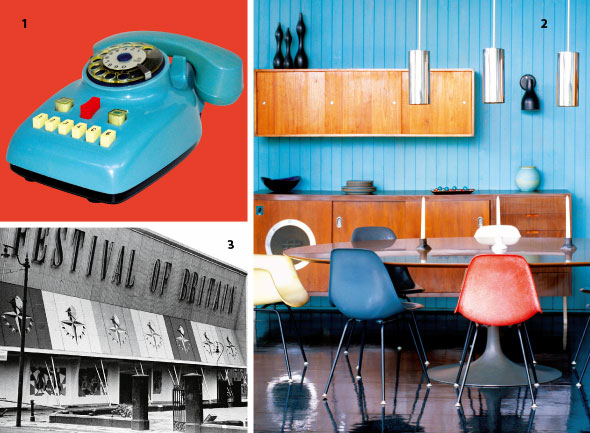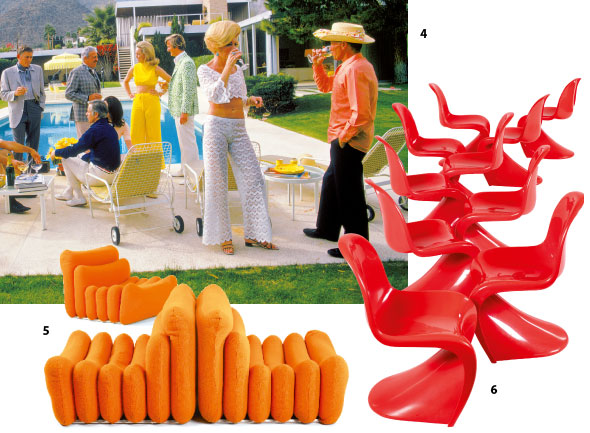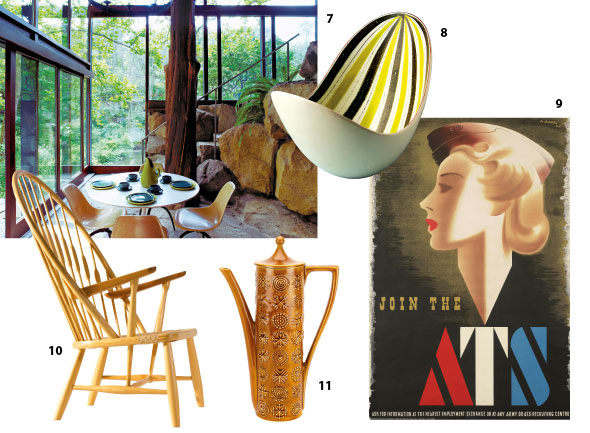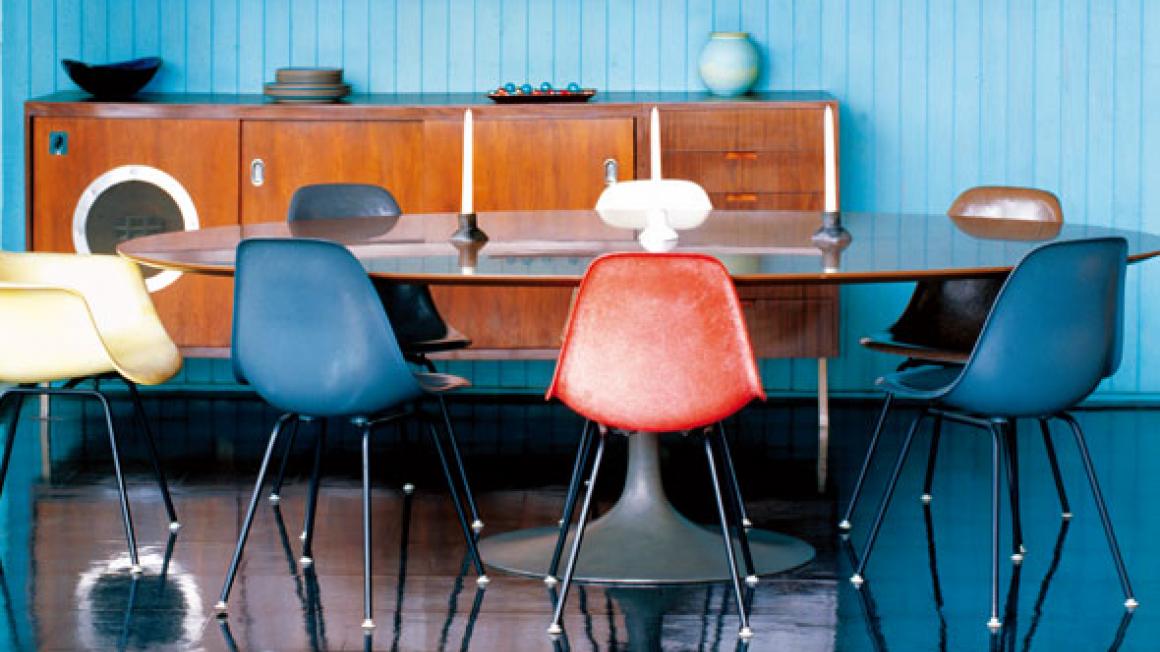Dynamic design
As Dominic Bradbury writes in his new book, MidCentury Modern Complete, these two decades ‘were all about “making it new”, about laying claim to the future. For designers and architects, especially, it was an extraordinary time to be at work, and the opportunities for creativity and originality were widespread and welcome.’
 1. A telephone made of cellulose acetate, rubber, metal and paper 2. The dining area of a Richard Dorman-designed house from 1958 in Los Angeles 3. Designer Abram Games’s symbol for the Festival of Britain
1. A telephone made of cellulose acetate, rubber, metal and paper 2. The dining area of a Richard Dorman-designed house from 1958 in Los Angeles 3. Designer Abram Games’s symbol for the Festival of Britain In part, this brave new world of design was fuelled by a period of economic growth and the rise of mass consumerism, particularly in the United States. People wanted a fresh start, a new look, better and brighter things – and mid-century designers and manufacturers were more than happy to oblige.
Everything from buildings and interiors to cars and textiles got a makeover, sold with the help of some truly dazzling graphic design. It was an era of advertising, branding, logos and image.
 4. Poolside party in 1970 at the Kaufmann Desert House in California, designed by Richard Neutra 5. This Additional- System seating can be arranged in different patterns, 1967 6. A set of 10 Panton chairs in injectionmoulded plastic, 1958, manufactured by Vitra
4. Poolside party in 1970 at the Kaufmann Desert House in California, designed by Richard Neutra 5. This Additional- System seating can be arranged in different patterns, 1967 6. A set of 10 Panton chairs in injectionmoulded plastic, 1958, manufactured by Vitra‘The world of mid-century design both mirrored the rapid changes in 1950s and 1960s society and helped in making them possible,’ writes Bradbury, ‘as it worked to give shape and identity to a new kind of lifestyle and a new wave of consumer products.’
Indeed, it laid the very foundations for the way we live now. No wonder, then, that we remain so fond of the near countless design classics it spawned.
 7. Designer Russel Wright’s home in New York State, the table laid with his American Modern ceramics 8. Bowl designed by Stig Lindberg for Gustavsburg, Sweden 9. Recruiting poster, 1941 10. 1947 chair made by Johannes Hansen 11. Totem co ee pot, 1963, designed by Susan Williams- Ellis for Portmeirion
7. Designer Russel Wright’s home in New York State, the table laid with his American Modern ceramics 8. Bowl designed by Stig Lindberg for Gustavsburg, Sweden 9. Recruiting poster, 1941 10. 1947 chair made by Johannes Hansen 11. Totem co ee pot, 1963, designed by Susan Williams- Ellis for Portmeirion Mid-Century Modern Complete, by Dominic Bradbury, is published by Thames & Hudson, priced £60.


